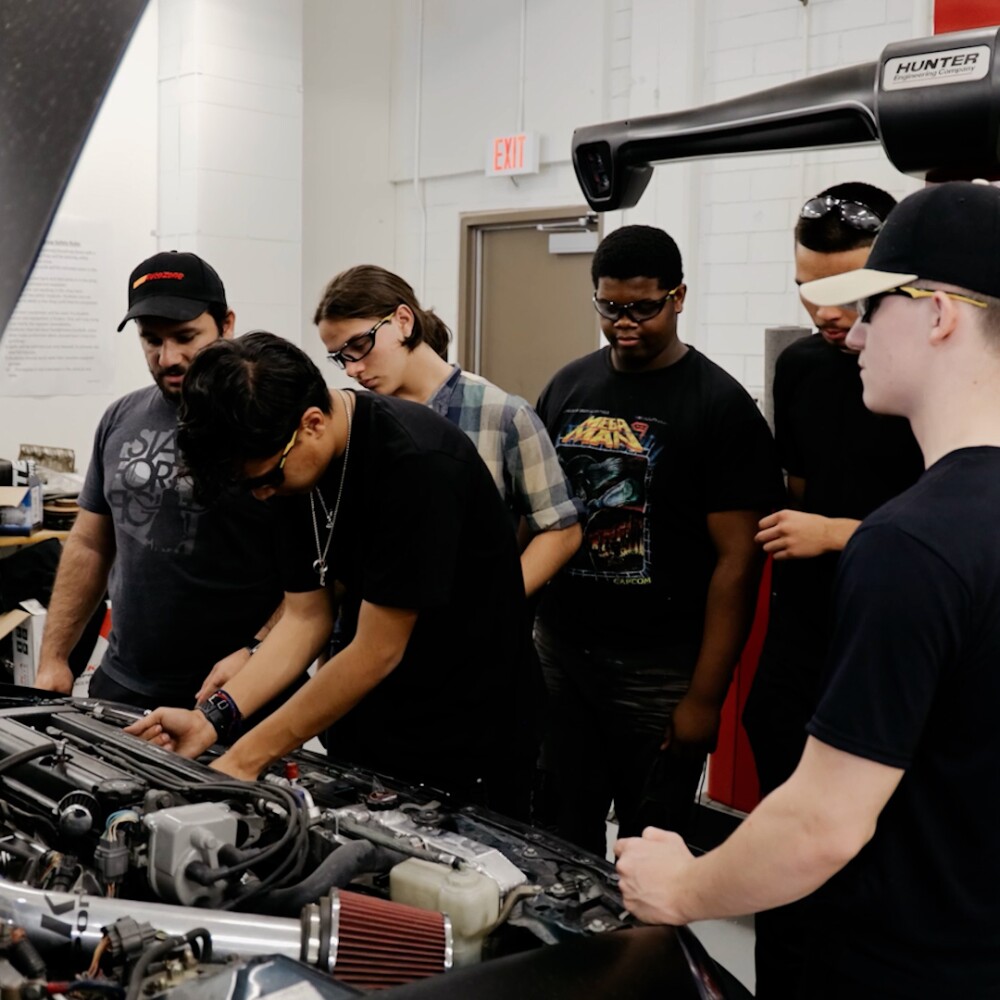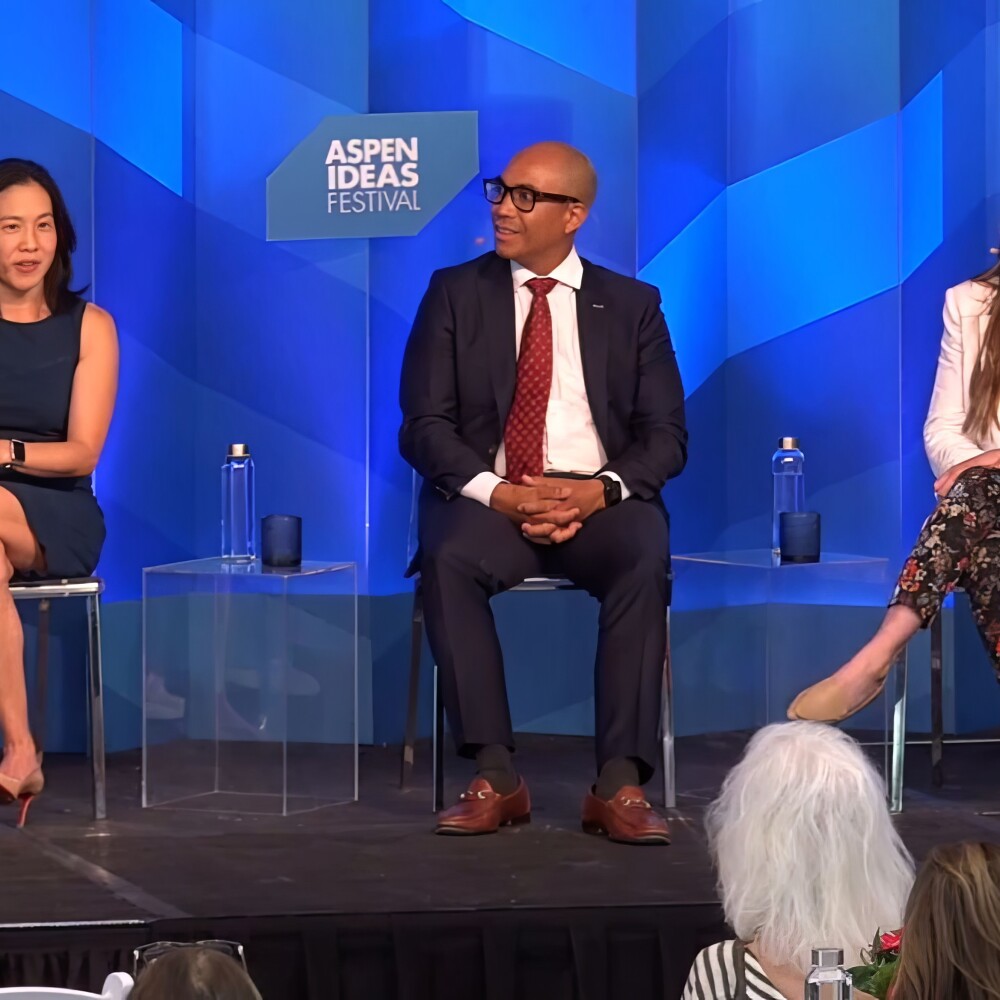America's schools have been struggling for years to close the 'diversity gap' between students and teachers.
Studies show that students of color perform better at school when they have at least one teacher of their own cultural or racial background. But while more than half of all public school students are students of color, more than eight in 10 of all teachers are white.
Teaching Excellence, the innovative teacher training program run by YES Prep Public Schools in Houston, is committed to diversifying the teaching profession.
With new support from the Walton Family Foundation, Teaching Excellence will train and support at least 620 educators, 70% of whom will identify as people of color, between 2018 and 2020. Importantly, the $790,000 grant will help ensure Teaching Excellence cohorts will be more than three times as diverse as the national average.
Because roughly 90% of Houston students identify as people of color, it's critically important to student achievement that the local teaching workforce becomes more diverse.
Beyond training diverse teachers, Teaching Excellence is training effective teachers. The year-long certification program pairs instructional coaches with new teachers, facilitating an invaluable mentor-mentee relationship.
Amara Mattingly and Tameike Washington exemplify the mentor-mentee relationship at Teaching Excellence. Amara is an instructional coach, working to ensure new teachers have the knowledge, skills and mindsets necessary to provide underserved students with an exceptional education. Tameike is in her second year as a seventh grade math teacher at YES Prep Southeast.
Amara recently spoke with Tameike about why she became a teacher, the importance of diversity among educators and the special role she plays for her students today.
Amara: Tell me about how you knew you wanted to be a teacher. What were your drivers?
Tameike: I knew I wanted to be a teacher at a very early age. It was always important to me to help people learn while appreciating that everyone learns differently.
At first, my mom discouraged me from being a teacher. She wanted to tell all her friends that her daughter was a doctor. I was in love with neurology, but I still had the urge to be a teacher. I started my application to YES Prep three times before finishing it.
I want to educate the kids who are going to educate my kids. Technology is changing a lot and this is changing how our young people interact with each other-just look at social media. I want to be a small part of ensuring today's students are successful and becoming their best selves.
Amara: You came to the U.S. from Jamaica in 10th grade. How did your own K-12 experience shape your thoughts on the importance of diversity in teaching?
Tameike: I'll break it down in two parts: Jamaica and U.S.
My kindergarten through ninth grade experience was very diverse, but I didn't realize it. In Jamaica, you have female, black teachers. Some male teachers. But almost everyone looks like you and comes from where you come from.
Moving to America, I was treated differently by some teachers. They assumed I was not as smart as I actually was. I once had a teacher who assigned the class a book report and said we could do more than one book for extra credit. I did three books - and she accused me of cheating. She was a black woman from the Caribbean, like myself, but she was not expecting to receive that level of work from me because, according to her, she hadn't seen it from other black students. I was disappointed because she did not have the same expectations for me as she had for the other students.
We need diversity in teaching so our students have the chance to interact with educators that want to bring out the best in them, regardless of where they are from or what they look like.
Amara: How do you think having a teacher of color impacts your students, both for students who look like you and those who don't?
Tameike: Being a teacher of color shows my students who look like me that excellence should be the standard and not the goal. I want them to know that they are, and can be, great despite what society has told them. For the students who don't look like me, I want to be a positive representation for them. I might be the only exposure they will have with a black woman and I want it to be one that they can carry with them into society.
Amara: Why was Teaching Excellence the right path into the classroom for you?
Tameike: I appreciated the structure Teaching Excellence provided. The summer Induction was my favorite part of the program-I learned more in a few weeks than I learned in my last year of college. I was day-one-ready for the school year.
During the year we had Professional Learning Saturdays. There was a session for everything I wanted to know as a new teacher. For example, I walked into a session that was on differentiation. It broke down strategies for how to reach all learners, like English language learners, students with special needs and students who were behind - or ahead - academically. The sessions allow teachers to ask questions, get on-the-spot feedback and practice the skills we're learning.
The coaches are always prepared, encouraging and supportive.
Amara: Walk me through what made Teaching Excellence so impactful.
Tameike: One of the strongest things about Teaching Excellence is the relationship you build with your coach … so in my case, the relationship I got to build with you, Amara. You made me the teacher that I am. I give you all the credit because you provide feedback that is helpful, practical and encouraging. You support me on the toughest days, when I questioned whether I could even be a good teacher. You walked me through every difficult challenge, but you've also helped me celebrate all the successes I've had. Because of this, I feel safe, supported and at ease, even when I'm stressed out.
Amara: Teaching Excellence trains teachers from YES Prep, but also from local charter networks and school districts. How did this collaboration - working with teachers from different schools and school structures - help make you a better teacher?
Tameike: It is always amazing to hear stories from other school districts and charter networks. It's great to form that community with other educators. One of the best parts of Teaching Excellence is that we not only get to learn from the facilitators who are great educators themselves, but we get to collaborate with and learn from other teachers, and that makes us all better educators.
Amara: How do you approach the classroom today?
Tameike: I am a stickler for routines and procedures. I am learning that students, especially middle schoolers, need routines in place that provide them with structure they can carry to the higher grades. The routines and procedures I learned at Teaching Excellence make me a consistent teacher. Consistency leads to growth.






